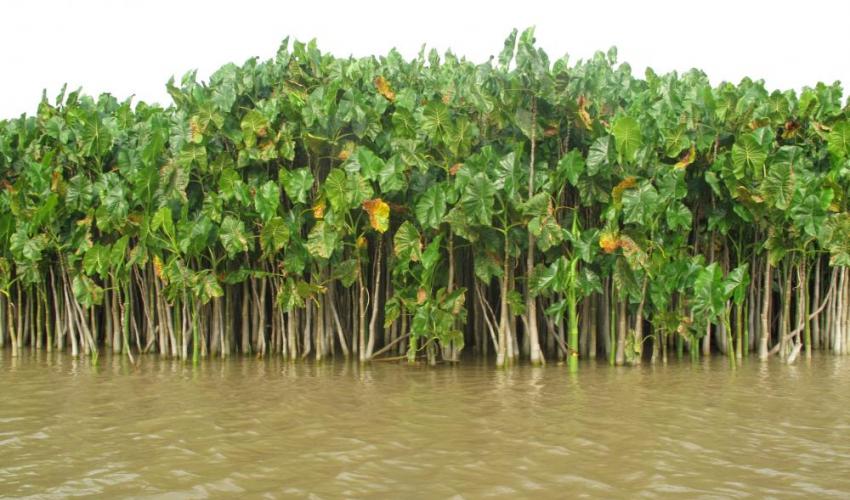The 1972 World Heritage Convention and Protected areas legislation are important mechanisms for achieving biodiversity conservation and protecting human livelihoods. IUCN has been integral to the historical development of the ideas behind these mechanisms and for setting new standards for on-the-ground implementation today.
IUCN Congress: Pioneering legal protection for natural sites
In the 1940s the idea that natural sites including national parks and wilderness areas require international, legally binding protection was relatively new. IUCN was among the first to recognize the importance of protecting natural areas, notably at the first International Technical Conference on the Protection of Nature in Lake Success, New York in 1949.
Throughout the 1950s, IUCN conservationists inventoried existing protected areas and sites that in their view required protection, and, in 1958 at IUCN’s Sixth General Assembly in Athens, Greece, IUCN Members called for the development of an official list of protected areas. The first UN List of Protected Areas was subsequently published in 1961.
At IUCN’s Ninth General Assembly in Lucerne, Switzerland in 1966, delegates and executives discussed the idea of a legal mechanism to designate areas considered to be valuable for all humanity. A U.S. delegation proposed that the UN List should be linked to a “World Heritage Trust” that would help fund and administer the protection of specific natural sites, parks and landscapes around the world.
A few years later, at the 1972 United Nations Conference on the Human Environment (also known as the Stockholm Conference), IUCN and UNESCO introduced a Convention that would mobilize the international community for the protection of outstanding natural landscapes and historic monuments. The 1972 World Heritage Convention was signed in 1972, and is now one of the most widely adopted conventions - ratified by 191 of the world’s 196 countries. It is the only convention that explicitly links nature and culture.
The World Heritage Convention and protected areas legislation remain important mechanisms for achieving conservation that otherwise may be politically unachievable. As the official advisory body on natural World Heritage, IUCN remains largely responsible for monitoring natural sites listed under the World Heritage Convention and evaluating the eligibility of new listings. Both the Convention and the regularly updated UN List of Protected Areas continue to draw on the joint work of IUCN and the United Nations Environmental Program (UNEP).
World Heritage for conservation in the 21st Century
2012 marked the 40th anniversary of the World Heritage Convention. That year, at the IUCN World Conservation Congress in Jeju, Korea, IUCN Members adopted a resolution calling to strengthen the convention, noting that the effectiveness of this international conservation instrument was increasingly challenged by threats like road and dam construction and natural resource extraction activities.
IUCN therefore produced the 2014 IUCN World Heritage Outlook - the first global assessment of all 229 natural World Heritage sites. The Outlook indicates that 60% of natural sites are likely to be well conserved while others face significant challenges. These numbers are telling. World Heritage sites are a litmus test for conservation efforts: if we cannot protect the world’s most iconic areas, how can we conserve and protect nature on a broader scale?
Through identifying which conservation sites are well-managed and which are vulnerable, the Outlook represents IUCN’s contribution to a more constructive approach to the way the World Heritage Convention is implemented on the ground. Given the international recognition and visibility of natural World Heritage sites, these have the potential to play a leadership role within the protected areas movement and demonstrate excellence.
Excellence in conservation: Los Katíos National Park
Los Katíos National Park in Colombia was recognized as a World Heritage site in 1994 because of its outstanding biodiversity. The sanctity of the site was threatened by illegal logging, poaching and overfishing and armed conflict and, in 2009, the site was included in the List of World Heritage in Danger.
“I believe Colombia has proven that being on the Danger List is not a punishment, but a great opportunity – an opportunity in which a country makes an important political decision to implement the necessary action to overcome serious challenges, so that a place of outstanding value to all humanity can have better conservation prospects for the future,” says Julia Miranda, Director of National Parks of Colombia and Vice-Chair of IUCN’s World Commission on Protected Areas.
An IUCN field mission in January 2015 confirmed that a steady increase of patrolling and cooperation with local communities has had positive results, including a reduction in illegal activities. Therefore, at the 39th session of the World Heritage Committee in 2015, Los Katíos was removed from the List of World Heritage in Danger.
“This decision is a huge encouragement for us to continue implementing the action plan developed for recovering the state of conservation of Los Katíos’s region,” says Julia. “The recognition given to us by the World Heritage Committee and IUCN gives us the determination to tackle these challenges. We are committed to reinforcing our strategies for improving the effectiveness of management and the protection of the park.
IUCN’s experts left very important guidelines for us to follow, so that the park’s conservation can continuously improve. Now that Los Katíos National Park has been taken off the Danger List, we have to continue implementing the management plan,” she says. “We would certainly like to work with UNESCO and IUCN to ensure this case in Colombia is documented and serves as an example for other countries to follow on the good use of the World Heritage Convention.”
A World Heritage-focused Journey at the 2016 IUCN World Conservation Congress in Hawaii will help guide participants to World Heritage-related events at the Congress, and a Protected Planet pavillion will be dedicated to protected areas.
Authors:
Simone Schleper
Maastricht University, History Department
P.O. Box 616, 6200 MD Maastricht, The Netherlands
Research: Nature’s diplomats: Ecological experts and the conservation policy of international organizations (1920-2000)
Célia Zwahlen
Communications Officer, IUCN World Heritage Programme
28 rue Mauverney, CH-1196 Gland, Switzerland
Tel. +41 22 999 0716; Fax +41 22 999 00 02











